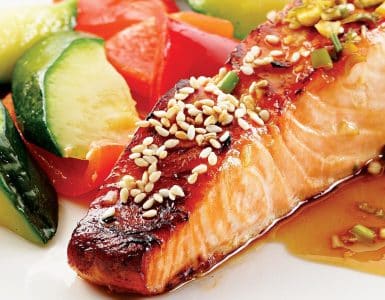It pays to pack a nutritious packed lunch for your child. Granted, it’s one more thing to do in an already busy day, but the benefits are numerous, especially if you are health-conscious. Packing your child’s lunch allows you to ensure that your child has healthy food at hand, helps keep your child away from unhealthier food choices, and may even be more economical.
Healthy packed lunches should include foods from at least three groups, providing your child with a balanced meal that includes whole grains, lean proteins, and fruits and vegetables. Health Advocate offers the following ideas on packing healthy lunches for your kids.
Know the rules. Many schools have policies in place to protect children who suffer from potentially life-threatening food allergies, such as peanut allergies. Before packing your child’s lunch, make sure you know the school’s policy on what foods you can and can’t send to school.
Think outside the (lunch)box. Don’t feel boxed in to packing a traditional sandwich/fruit/milk combo. Consider other types of balanced meals that contain interesting foods. For example, you could pack hummus and whole-grain crackers, a hard-boiled egg, cut-up vegetables and a yogurt.
Have healthy foods on hand. When preparing lunch, make sure you have healthy foods that pique your child’s interest and eating style. Some healthy foods to keep in the kitchen include: whole grain breads and crackers; canned tuna fish; low-fat cheeses and cottage cheese; low-sodium natural lunch meats; various fruits and vegetables; yogurt and granola. Encourage your kids to make fun sandwiches with different whole grain breads, bagels, pita pockets or colorful wraps. Instead of traditional sandwich spreads like mayonnaise and mustard, try tabouli or hummus.
Keep it cool. If you are packing foods that need to be kept cold or chilled, use an insulated lunch box and include a freezer pack that helps food stay cold.
Consider your child’s age. It’s important to pack foods that are easy to eat, especially for younger children. Older kids might be able to peel an orange or hard-boiled egg with no problem, but younger ones might have a tougher time completing these tasks quickly. Make sure to peel and cut up foods to make it easy for younger children to eat. Other fun, nutritional lunch options include:
- Spinach wrap or tortilla with shredded low-fat cheddar cheese, chopped grilled chicken with a side of cut up carrots, celery and cucumbers
- Egg salad on whole-wheat bread with tomato and lettuce and a side of fruit salad or applesauce
- A ½ cup of low-fat cottage cheese mixed with strawberries, blueberries and pineapple with whole-grain crackers and hummus
- A whole-wheat pita pocket stuffed with feta cheese, grilled chicken, cherry tomatoes, olives and lettuce with a side of yogurt
Don’t forget a drink! Water is always the healthiest choice. But if your child prefers fruit juice, make sure you provide juice that is 100% natural with no added sugars.
Make it fun. We all crave a snack now and then, so offer your kids some healthier types of treats. Some nutritious options include:
- Baked potato chips
- Air-popped popcorn
- Trail mix, raisins and other dried fruits
- Seeds (such as pumpkin or sunflower seeds)
- A square of dark chocolate
- Granola bars and fig bars
A few extra tips to make packing lunches easier for moms and dads:
- Have your child help. Lighten your lunch-packing workload by getting your child involved. For example, you could cut up some raw vegetables for your child’s lunch, and they could pack them into a reusable container or plastic sandwich bag. Or, you could tell them that it’s their responsibility to choose a piece of fresh fruit from the basket to add to their lunch bag. Not only does it reduce the work you have to do, it gets your child involved in preparing healthy choices.
- Buy in bulk. Especially if you have more than one child, it may be a good idea to buy healthy lunchtime staples in bulk from your preferred wholesale club; this could lower your price per item. It’s easy to store nonperishable items like applesauce, 100% fruit juice boxes, bottled water, peanut butter, bags of trail mix, nuts, and granola bars.
- Prepare in bulk. If preparing a healthy lunch for your child every school night doesn’t fit your schedule, choose one night and prepare lunches for the whole week. Make and package sandwiches, cut-up veggies, bags of healthy snacks (whole-wheat crackers, dried fruits, etc), and a fruit (fruit cups, applesauce, or fresh fruit); put into brown paper bags and stash in the fridge.
If you are a Health Advocate member and you have access to Wellness Coaching, call your coach today, or visit HealthAdvocate.com/members, for more healthy meal ideas!



